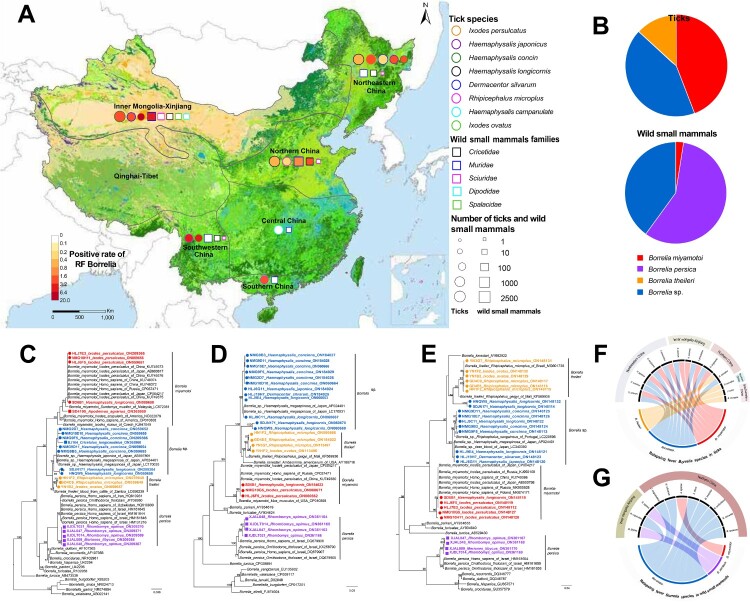Figure 1.
The distribution and genetic characterization of relapsing fever Borrelia in ticks and wild small mammals in China. (A) Geographic distribution of Relapsing Fever (RF) Borrelia species in China. The collection site for the sampling and test of RF Borrelia. Eco-climate regions were used for the geographic description, with six of them sampled: Northeastern China, Inner Mongolia-Xinjiang, Northern China, Central China, Southwest China and Southern China. The colour of the circles indicates positive rate of RF Borrelia in ticks; the colour of circle outlines represents tick species; the size of circle represents the number of ticks collected in the area. The colour of the squares indicates positive rate of RF Borrelia in wild small mammals; the colour of square outlines represents families of wild small mammals; the size of square represents the number of wild small mammals collected in the area. (B) The RF Borrelia species determined in ticks and wild small mammals. Phylogenetic analysis of RF Borrelia species based on rrs (C), flaB (D) and glpQ (E) genes. The tree was constructed by using the maximum-likelihood method with the GTRGAMMA model in RAxML. Bootstrap values were calculated with 1000 replicates. Scale bar indicates the degree of divergence represented by a given length of branch. RF Borrelia species determined in the current study were shown in colour. Sequences from ticks and wild small mammals were labelled with circle and square respectively. Chord diagrams between RF Borrelia species and tick species (F) and wild small mammals (G) in five eco-climate regions in China.

